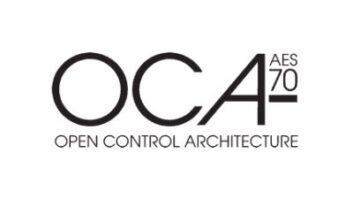Kevin Goldberg is an attorney with Fletcher, Heald and Hildreth.
Today’s metaphor is chess – more specifically, the queen sacrifice, a strategy in which a player gives up a strong piece in the hope of gaining some compensating tactical advantage. What does this have to do with the long-running patent infringement lawsuit being pressed by Digimedia (formerly known as Mission Abstract Data) against a number of prominent radio broadcast groups, or with Digimedia’s related efforts to convince other broadcasters into signing licensing agreements?
Digimedia may have made its own queen sacrifice … or it may just be bluffing to stall for time.
When last we checked in on the Digimedia situation last March, the United States Patent and Trademark Office (USPTO) had issued a Notice of Intent to Issue Reexamination Certificate (NIRC) effectively affirming the patentability of some, but not all, elements of Digimedia’s Patent No. 5,809,246 (the 246 Patent) and a “final rejection” relative to at least some aspects of Patent No. 5,629,867 (the 867 Patent). Lately you may have read that the USPTO on July 8 issued a further NIRC affirming the patentability of some, but not all, elements of the 867 Patent, too. This latest action follows a second reexamination proceeding regarding the 867 Patent.
Sounds like the tide has turned in Digimedia’s favor, doesn’t it? Certainly a number of press accounts have suggested that the USPTO’s latest decision is a blow to broadcasters and a victory for Digimedia.
We’re not so sure.
As we’ve said many times in the past, we here at CommLawBlog are not patent attorneys. But you can’t be involved in an issue for more than two years without picking up a thing or two along the way. One thing we expected was a further USPTO ruling on the 867 Patent sooner or later. Despite the fact that the March USPTO action was termed a “final rejection” of the 867 Patent, Digimedia still had an opportunity to seek further review, which it did. And as we suggested last March, it seemed clear that at least some aspects of the 867 Patent were likely to survive – the big questions were how much of Digimedia’s patents would be left when the dust settled and how great a threat (if any) would they pose to broadcasters.
Our initial review indicates that the 867 Patent, as re-issued, may not be all that strong. In its response to last March’s USPTO decision, Digimedia amended some claims in the 867 Patent – and in so doing acceded to the cancellation of Claims 4 and 5 of that patent. Again, we’re not patent lawyers, but from what we understand, those were not insignificant claims and their removal constitutes a marked change in the breadth of the 867 Patent.
You’re probably asking the same question we did: If claims 4 and 5 are so important, why would Digimedia relinquish them? Consider this. The 867 Patent is valid only until May 13, 2014. The clock is ticking in term of Digimedia’s ability to leverage the patent. Meanwhile, the main lawsuit filed against larger broadcasters in the U.S. District Court for the District of Delaware has been stayed since November, 2011 and isn’t going to be lifted until the USPTO reissued both of Digimedia’s patents in some official form. If you’re Digimedia, you’re pinned down, unable to rattle your litigation saber (for whatever good that might do), and time is running out. What do you do?
Maybe you play the queen sacrifice: give up a major piece to get more in return.
As hard core chess aficionados among us realize, there are actually two types of queen sacrifice: the “real” sacrifice and the “sham” sacrifice. The “sham” sacrifice is not a sacrifice at all: rather, the “sacrificer” expects an immediate return from the move (checkmate, the ability to take multiple important pieces from the opponent, etc.), so the loss of a queen is really no big deal. By contrast, the “real” sacrifice is a longer term play by which the “sacrificer” is looking for some eventual strategic benefit.
So which is this? Perhaps, as is often the case in chess itself, there are elements of both. Sacrificing Claims 4 and 5 was likely to – and did – result in the USPTO granting the reexamination proceeding in short order. That, in turn, was likely to result in an immediate lifting of the stay in the Delaware court. (Digimedia has already notified the court there of the USPTO action and has asked that the stay be lifted.) So was Digimedia’s sacrifice really a sham, intended to assure the re-opening of the Delaware litigation?
Maybe, but that’s hardly the equivalent of an immediate checkmate. The broadcaster/defendants in the Delaware suit have been litigating that case hard for a couple of years already. They’re not likely to throw in the towel now, particularly if they sense that Digimedia’s patents may have been rendered largely harmless thanks to the USPTO’s repeated reexaminations.
But if the sacrifice here is a “real” sacrifice, Digimedia may be looking for a longer term, less direct, result. Digimedia may be figuring that it can spin both the reissuance of its patents and the lifting of the Delaware stay to its advantage by launching a new round of high-pressure solicitations to broadcasters regarding the licensing agreements. We won’t be surprised to see this before long.
How should broadcasters respond if and when those calls and FedEx packages start arriving again?
Since we don’t give legal advice here on CommLawBlog, you’re on your own here. As we have repeatedly urged, any broadcaster approached by Digimedia should consider consulting with an honest-to-goodness patent attorney. Whatever remains of Digimedia’s patents should be carefully reviewed in the context of each broadcaster’s own particular equipment configuration.
And remember, it’s a chess match – a speed chess match, actually – and Digimedia has less time left on its clock than you do. Take your time and reflect carefully before making your next move (and make sure that move is right for you, not just what you think everyone else would do). And remember that everything may not be as it seems: Digimedia’s most recent move may not have been a Queen Sacrifice of any kind; rather, it may have been a last-ditch effort to avoid a stalemate that would be fatal to Digimedia’s hope for ultimate success. It remains to be seen whether Digimedia’s move will achieve that goal, or whether that move will simply accelerate checkmate for broadcasters.
This commentary is reprinted from the Fletcher, Heald & Hildreth blog with permission.
_












